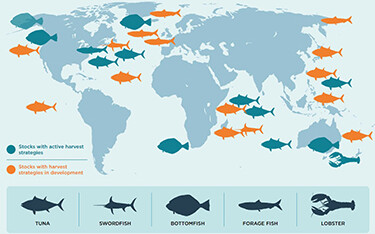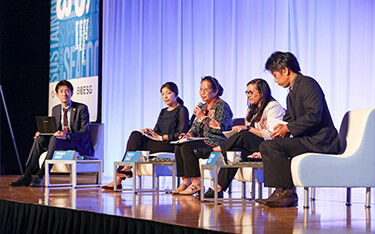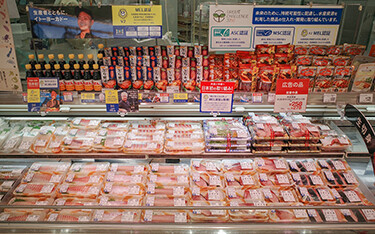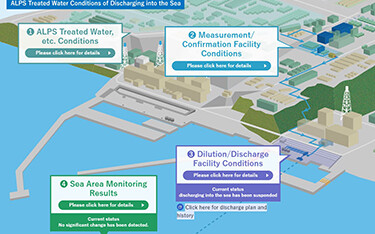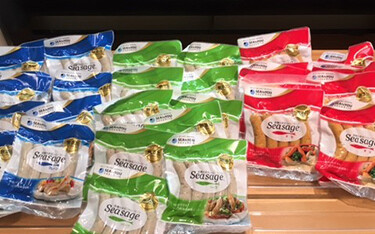Chris Loew reports from Osaka, Japan as a contributing editor for SeafoodSource.com. In addition to writing for SeafoodSource.com, he covers Japan for
Author Archive
FRD Japan – one of four companies in the country working on large-scale, land-based recirculating aquaculture system (RAS) salmonid-farming projects in the country – is touting its energy-efficient system as it continues construction of its commercial-scale facility.
FRD, which focuses on rainbow trout production, said its land-based system avoids introducing wasted feed or fish feces into the ocean and does not create a
… Read MoreChina has maintained its ban on Japanese seafood following the controversial release of wastewater from the Fukushima Daiichi Nuclear Power Plant, despite recent promises of a review, but some products that fall under the broad category of “marine products” are still entering the country.
Following the ban, which went into effect in August, Japan’s seafood exports to China plunged 90.8 percent year over year dipping
… Read MoreTokyo, Japan-based Kyodo Senpaku is set to replace its aging mothership with a new model, signaling Japan’s continued commitment to whaling.
Kyodo Senpaku the only company in the world still employing the mothership system of whaling. The system uses more agile ships to hunt for whales, which then transfer carcasses onto a mothership for freezing and storage instead of bringing them to land-based storage facilities. Kyodo Senpaku’s
… Read MoreIchiro Miyashita, Japan’s minister of agriculture, forestry, and fisheries, recently suggested having Japanese prisoners shuck scallops to alleviate the lack of manual labor in the country’s seafood-processing sector – but he abandoned the plan after discovering that the U.S. and Canada don’t allow imported products made with prison labor in their supply chains.
The scheme, which Miyashita unveiled on 20 October, would
… Read MoreNumerous NGOs have been pushing for regional fisheries management organizations (RFMOs) to adopt harvest strategies as a means of effectively managing seafood stocks, but even their fiercest advocates admit the path toward their adoption isn’t easy.
A harvest strategy is a method in which RFMOs and other fisheries managers develop predetermined actions that trigger when stock assessments, catch data, and return on effort – among
… Read MoreThe first fully in-person Tokyo Sustainable Seafood Summit (TSSS) in four years – after online-only events throughout the Covid-19 pandemic – ran from 17 to 19 October, and the event highlighted human rights issues in the seafood supply chain in the wake of the bombshell Outlaw Ocean Project report on 9 October.
Since its inception in 2015, the event, co-hosted and financially supported by the David and Lucile Packard Foundation and
… Read MoreA handful of Japanese supermarket chains, including AEON, the Japan Consumers’ Cooperative Union (JCCU), and Seven & i Holdings, have been early adopters in the country of procuring and marketing eco-labeled seafood products – with the latter two companies setting specific sales targets.
In 2018, JCCU set a goal that Marine Stewardship Council (MSC)- and Aquaculture Stewardship Council (ASC)-certified product sales would comprise
… Read MoreIn late August, China submitted a notification of emergency measures to the World Trade Organization (WTO), stating that it planned to suspend imports of all Japanese-origin aquatic products as a result of the controversial release of treated wastewater from the Fukushima Daiichi nuclear power plant.
Soon after the notification, Japan’s delegation to the WTO submitted a counterargument on 4 September challenging the ban that emphasizes the
… Read MoreWhat was once a simple fishcake shop in a Japanese seaside town has now grown into a budding tourism complex teaching the history and process of fish paste manufacturing to visitors, while simultaneously continuing to develop innovative products.
Suzuhiro Group started as a side company for the fourth-generation owner of an Odawara-based family fish shop in the 1860s, who made and sold kamaboko fishcakes and handled the regular tasks of running
… Read MoreJapan’s Nagasaki Prefecture experienced the worst case of red tide damage in the region’s history in early August, leading the prefectural governor to call on the country’s national government for additional aid to compensate affected aquaculture companies and research how to better anticipate red tide to prevent future damage.
The crisis stems back to late July, when people began to notice areas of dark brown water in
… Read More










